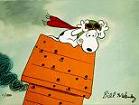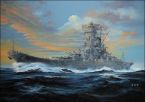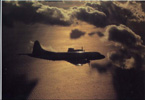PresterJohn001
Posts: 382
Joined: 8/11/2009
Status: offline

|
quote:
ORIGINAL: Bullwinkle58
quote:
ORIGINAL: PresterJohn
The suggestion that Japanese airframe production is overpowered has been asserted, but not evidenced. The only discussion i have seen seemed to show if anything Japanese airframes were being underproduced. The distribution is different but thats to be expected. Its also a red herring and irrelevant to whether the 4e bomber model works well. Allowing the Japanese control over airframe production but not the Allies is a game design decision.
I think the argument that bomber turrets should not be as accurate as fighter guns is a very good one, logical and in line with history. A careful tweak here could result in more historic results throughout the war and encourage more realistic use of the aircraft.
To your first point, airframe production numbers have been posted, but not broken out are trainers, artillery spotters, etc., which numbered in the thousands. But more importantly, and a point continually ignored by the "historical" wing of the forum, is that the airframes burn supply, not av gas, in the game, while historical ground crews' attempts to insert boiled rice into gas tnaks was a perennial operational failure. Supply can be produced in the game through LI with no oil or fuel inputs. It can be hand-waved into existence, and then carried even by submarines to where the planes are. It is as ahistoric a mechanic as exists in the game, yet there is contstant willful ignoring of this fact. Japan's historic air forces weren't grounded due to lack of airframes; thousands were found at the surrender. They weren't grounded by lack of men; thousands of ill-trained "pilots" were found at the surrender. (Ill-trained due to lack of fuel to accumulate flight hours.) The air forces were gounded by lack of fuel. And this constraint is not present in the game. It is what allows the Japanese player to overwhelm the Allied air effort at every stage of the game. It is supremely ahistoric.
Is production a "red herring" as you asset? I argue not. It is fundamental to the issue and to game balance. At this point, 1.5 years into the game's lifespan, there are still numerious calls to micro-change some small, tactical area of the game and not enough atttention to the game's balance overall, which is the sum of all of those tactical trade-offs.
Many of them rest on the fundamental, inherited design decision to not give the Allies variable production. Unlike Nemo, I would argue that this, while a worthy goal, cannot be simply spliced onto the existing game without a massive unbalancing against the Japanese player's interests. The entire underlying economic model would need to be rethought. In particular, CONUS Resorces and Oil are infinite and untouchable by the Japanese player. In reality, strategic resources such as steel and aluminum were scarce and rationed in the US by war production boards. Current in-game granularity in the area of Resources is insufficient to restrain any Allied variable production effort and prevent them running amok in further ahistoric fashion.
Your second point masks Nemo's contention up-thread that he is referring to waist-gunners, not B-17 or other model's turrets. The tail gunner, ball gunner, or especially top gunner in a B-17 had a substantially stable platform to fire from and good visibility across his firing arc not possessed by the two waist gunners. Were they as accurate as a fighter's guns? I don't know; I haven't seen stats. But on a gun-for gun basis (2 barrels versus 4, 6, or 8 on a fighter), when gunner workload is factored in (the pilot has a lot more to be doing at the point of firing than the bomber gunner) I'm not so sure the fighter is superior.
So total airframe production is within historical bounds but distribution of builds is different then? Supply is an abstract, a neccessary one to make the game playable, its also produced more effeciently with HI which does use fuel i believe. Whilst i'm sure you are right that including avaiation fuel as another resource would make the game more "accurate" it again is irrelevant as its not going to happen and even if included Japanese players would just make sure enough was produced as it would be an obvious critical resource. It might not add anything to the game.
Discussing the accuracy of the production model does not impact the accuracy of the combat model. They are not directly related. Part of the point of a game like this is to allow ahistoric choices by both sides and then try to model what the outcome would be. In order to do that the combat model should resonably follow historic outcomes in historic situations, but also reasonably extrapolate to ahistoric situations
Ive never claimed great knowledge of technical aspects of ww2, i'm more of a gamer than a history buff.. that said i would be very suprised if a gunner turret was as accurate as a fighters guns. If they were i'm sure an air supremacy gunship would have been built an used. Theres a reason that bombers needed escorts and its not coming through in the current combat model for allied 4e bombers.
I do prefer the Japanese side to play, but i also prefer the more historic scenarios, number 1 or big babes
< Message edited by PresterJohn -- 1/2/2011 8:41:05 PM >
|
 Printable Version
Printable Version













 That's the perfect coordination you are referring to - yes?
That's the perfect coordination you are referring to - yes? 
 )
) 




 New Messages
New Messages No New Messages
No New Messages Hot Topic w/ New Messages
Hot Topic w/ New Messages Hot Topic w/o New Messages
Hot Topic w/o New Messages Locked w/ New Messages
Locked w/ New Messages Locked w/o New Messages
Locked w/o New Messages Post New Thread
Post New Thread